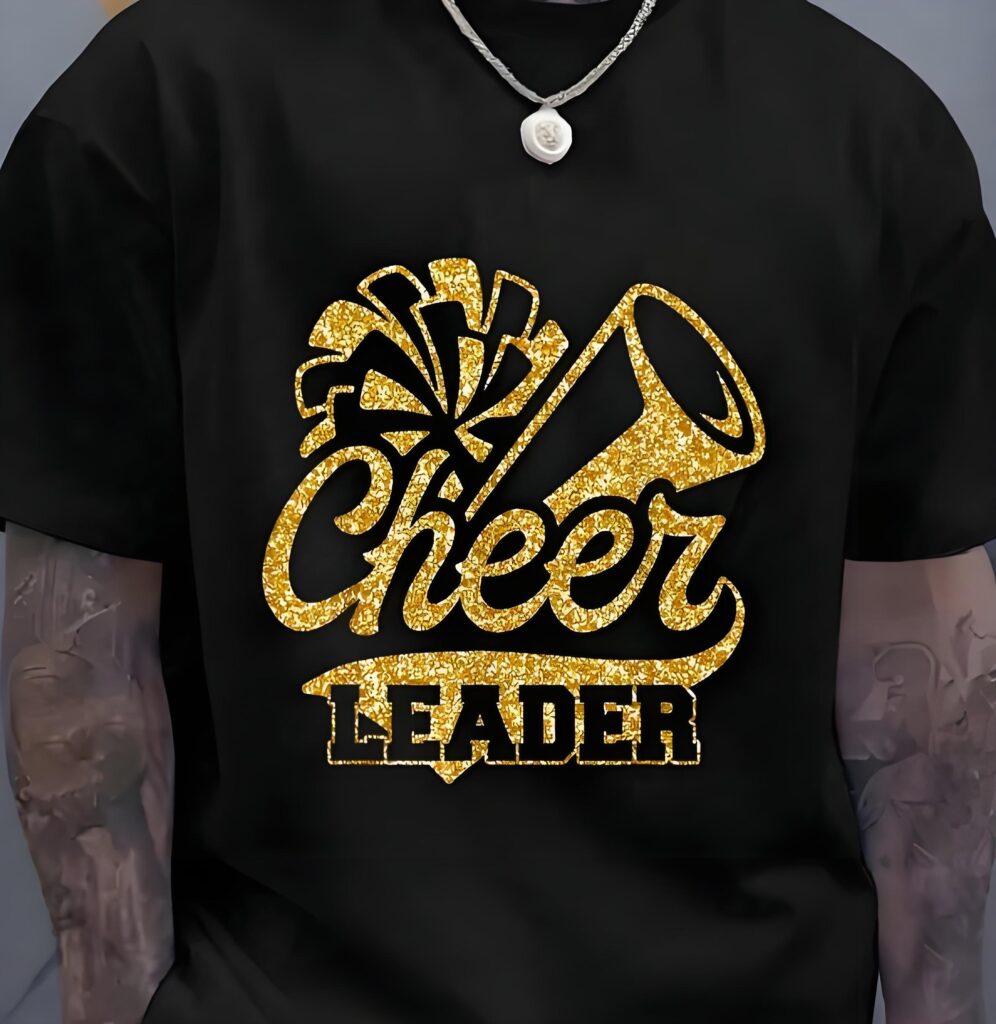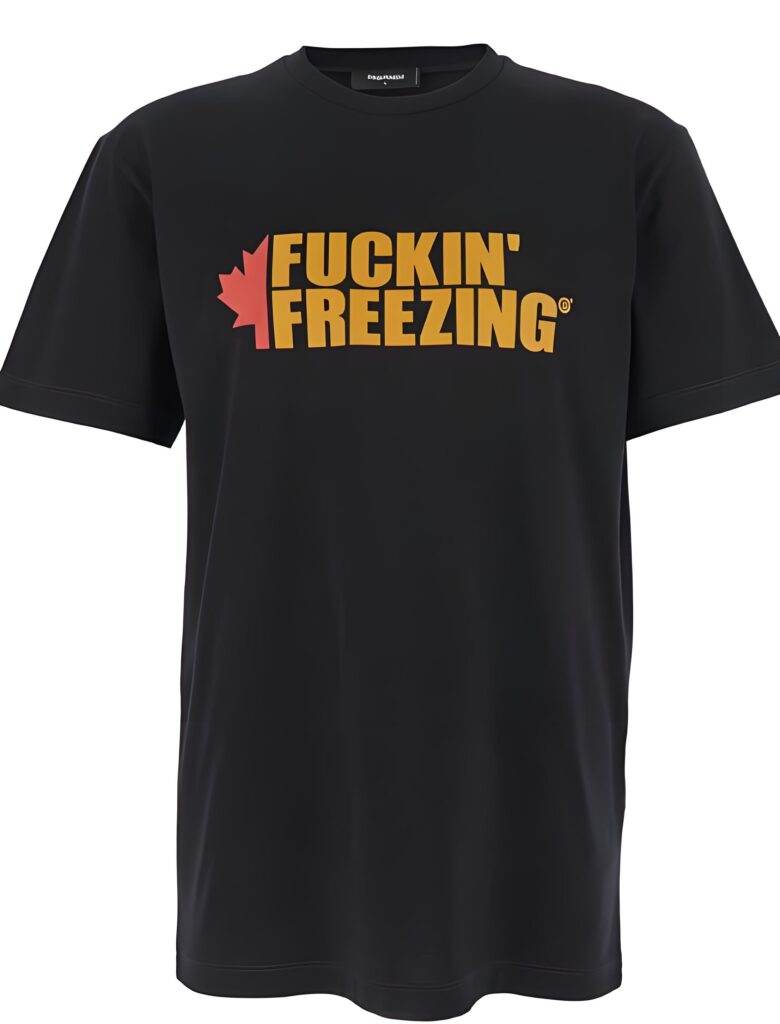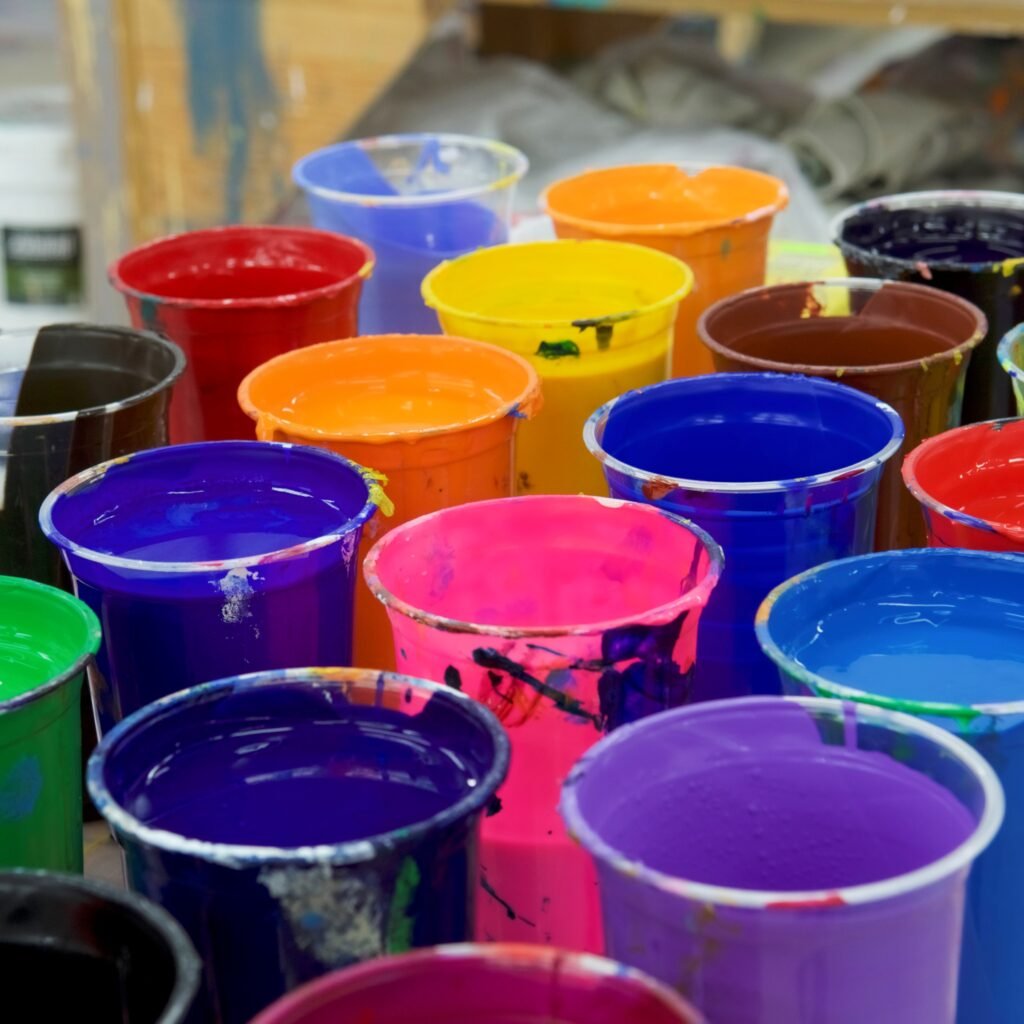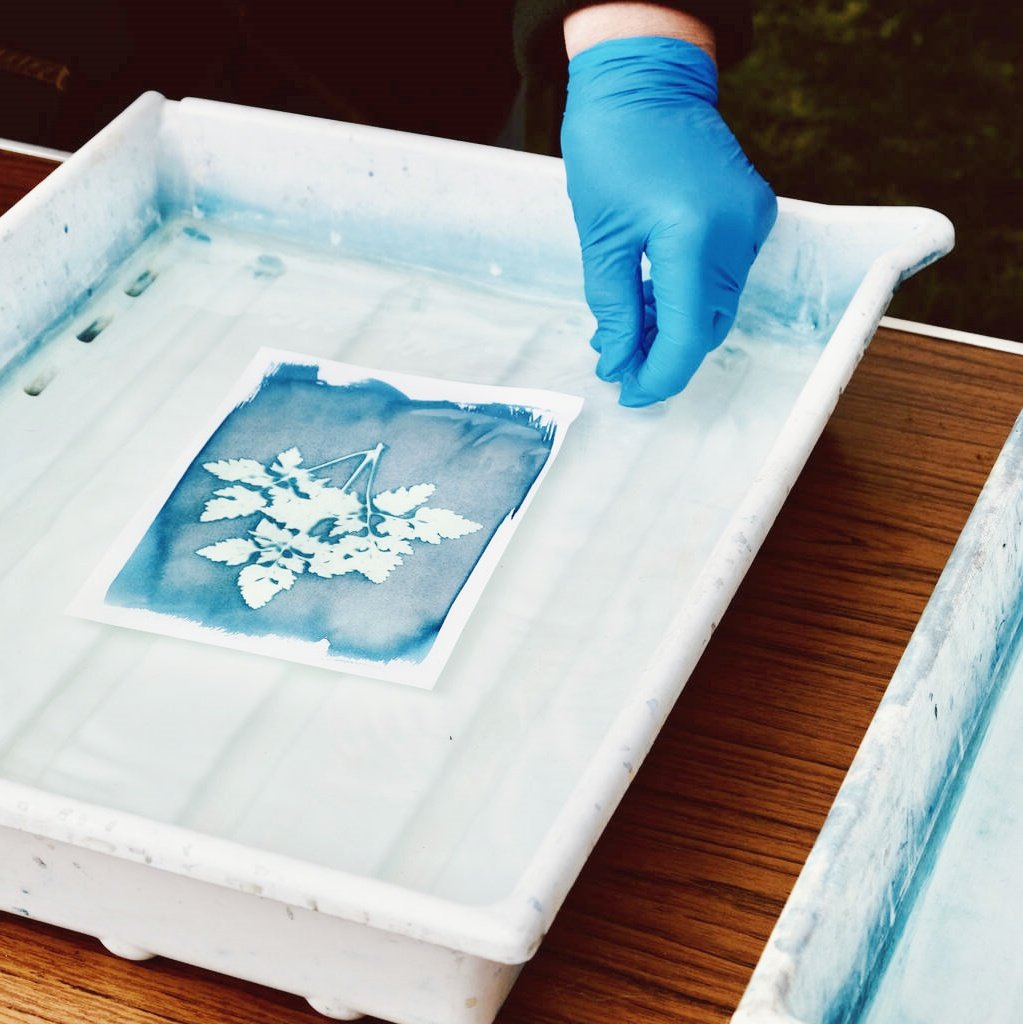Want to make your designs shimmer with rich steel brilliance? Whether you’re a hobbyist or a pro display screen printer, this deep-dive uncovers everything you want to understand approximately metal ink—mainly metallic gold ink—and the way to print show-preventing designs on cloth the use of display screen printing. You’ll find out about the residences of metallic inks, the technology at the back of that luminous shimmer impact, technical secrets and techniques for ideal prints, and important safety information. If you’ve questioned approximately the nice ink for darkish fabrics, getting ideal cure, or how metallics can combination with different colorations, this text is your golden price tag. Read directly to discover recommendations, solutions, and innovative aptitude for unforgettable, long lasting prints, full of clear advice you’ll simply use.
Mündəricat
1. Nədir Metal mürəkkəb and Why Does it Stand Out?
Metallic ink is a special sort of screen printing ink that includes tiny reflective metallic debris or pigments, designed explicitly to present prints a luminous, rich metallic effect. Unlike conventional ink, metallics offer an eye catching sparkle and shimmer that truly can’t be executed thru flat pigments. These inks open an entire new global of creative possibilities for printers, remodeling primary prints into vibrant, expensive works of artwork.
One of the motives steel ink is so sought-after is its capability to grab attention; the interplay of mild on glittery steel ink immediately attracts the eye, making it an asset in fashion, branding, and promotional printing. Metallic colors like steel gold and metallic silver are mainly popular for adding aptitude to fabric, raising the perceived value of the garment and supporting manufacturers stand out in crowded markets.
The versatility of steel ink also manner you could apply it to a whole lot of fabrics, whether you’re printing on cotton, poly blends, or maybe a hundred% polyester. Various styles of metallic display printing ink—inclusive of plastisol ink or water-based—offer display screen printers with the power to achieve special results, from a soft hand to excessive shimmer results, relying at the type of mesh, underbase, and curing technique you use.

2. Necə olur Metallic Gold Ink Transform a Print?
Metallic gold ink is celebrated for its iconic, high priced appearance. When you print with metal gold, you’re not simply creating a layout—you’re making a assertion. This kind of ink brings a shimmer impact and an unmistakable brilliance to any print job, presenting a luminous, fascinating sheen that regularly serves as a focal point in fashion and promotional apparel.
The technological know-how at the back of the flicker lies inside the metal pigment suspended in the ink. These pigments are cautiously formulated to mirror mild at distinctive angles, leading to a rich metal finish. Printers frequently use steel gold ink to enhance trademarks, add accent information, or create all-over prints that catch and replicate direct daylight, giving garments an upscale, colourful appearance.
When paired with the proper mesh and underbase, metal gold ink offers exquisite opacity—even on dark fabrics, where fashionable inks would possibly fade into the heritage. This first-rate guarantees the gold stays ambitious, opaque, and placing, making it a top desire for screen printing on darkish garments and forte promotional objects alike.
3. What Is the Science Behind the Shimmer Effect in Metallics?
The shimmer impact that makes metallic ink so appropriate comes from how metal pigments replicate and refract mild. These tiny steel flakes are an awful lot large than fashionable dye or pigment debris, and whilst suspended in the ink binder, they align particularly flat on the surface of the material because the print dries and treatments. This alignment lets in light to bounce back off the surface, creating a sparkle or dramatic sheen.
But that’s no longer all—an awesome metallic ink is engineered for opacity so it remains ambitious on any shade garment. The bodily houses of metallics mean display printers want to apply the correct mesh counts and ink masses to get simply the proper shimmer with out the print turning into too thick or flaking off. If you need maximum sparkle, ensure the ink is properly blended and applied to allow the ones metal debris to lie as flat as possible.
4. Which Fabric Types and Garments Show Metallic Ink Best?
You would possibly wonder if metallic ink is appropriate for every cloth. The answer comes right down to fiber type, weave tightness, and the way properly the material can preserve onto each pigment and binder for the duration of printing and curing. Metallic ink suggests high-quality on clean, tightly woven fabrics like cotton, polyester, and poly blends. These substrates offer even surfaces, allowing the metallic debris to settle and replicate mild for that luminous shimmer effect.
Stretchy fabric or clothes on the way to go through common wash cycles require a piece greater care when the usage of metallic inks. Wash sturdiness is predicated on both ink selection (plastisol ink is regularly great for those packages) and reaching proper cure temperature at some stage in the printing technique. Using an underbase of base white or low bleed inks helps enhance opacity on darkish fabric, making metallics pop with wealthy brilliance.
5. How Do You Print with Metallic Ink for Vibrant Results?
Screen printing steel ink isn’t significantly one of a kind, however you’ll want to pay attention to 3 key steps. First, use a lower mesh rely display screen—normally between 86 and a hundred and ten mesh—to make certain the metallic flakes in the ink can skip through and cling properly to the cloth surface. If you use too great a mesh, lots ink may be trapped, and the print can look dull.
Next, do not forget your print order. For printing on dark clothes, continually use an underbase of base white for max opaque results and to prevent dye migration or bleed through the metal print. For remaining vibrancy and sturdiness, make certain the ink is nicely blended and don’t overload your screen with too much ink without delay; this avoids flake and guarantees a tender hand sense.
6.What Mesh and Screen Choices Are Best for Metal mürəkkəb Print?
Selecting an appropriate mesh remember in your display screen is vital when working with steel ink. The metallic flakes in the ink are larger than normal pigments, so a coarser mesh—like 86 to one hundred ten mesh counts—allows the ink to bypass thru smoothly. If you attempt using a pleasant mesh, the steel debris gets stuck, resulting in a susceptible, patchy, or inconsistent print.
Additionally, right anxiety on the display screen ensures a clean release of metal ink onto the material. Low-tension screens can reason the ink to pool or smudge, reducing opacity and diminishing the trademark shimmer. Take care additionally with the squeegee angle and strain to govern both ink deposit and print detail, mainly for difficult artwork the usage of metallics.
7. How Do You Cure Metallic Ink and Ensure Durability?
Curing is the technique that locks metallic ink into cloth, ensuring durability wash after wash. For plastisol ink and maximum metallic inks, the standard treatment temperature is around 320°F (one hundred sixty°C), despite the fact that lower cure formulation exist for sensitive fabric. Using a conveyor dryer or infrared heat setup is prime to accomplishing a good, thorough cure.
However, metallics want more attention. Too a great deal heat can reason the steel end to tarnish or discolor, whilst too little will harm wash sturdiness and hazard the ink washing out. Run frequent checks the use of take a look at strips to affirm the ink is nicely cured. If doubtful, observe the manufacturer’s cure temp and adjustment suggestions—especially for forte formulation like metallic gold, metallic silver, or shimmer effect inks.
8. Does Metallic Ink Have Special Wash and Care Instructions?
Yes! Finished prints with steel ink require a touch more care to hold their shimmer and opacity. Always train quit customers to wash garments internal out, use cold water, and keep away from harsh detergents or bleach. Overexposure to direct daylight also can stupid the wealthy metallic brilliance over time.
If the steel ink is not cured thoroughly at the right temperature, you hazard flake or rapid put on-off during the primary wash. For polyester and poly combination fabric, constantly use low bleed metal formulation and, if needed, a distinctiveness additive or binder to reduce the hazard of dye migration which can make steel ink prints seem dingy. Proper care guarantees steel colorations stay vibrant, luminous, and gentle to touch.
9. What Are the Safety Data and Environmental Considerations for Metallic Ink?
Whenever you’re working with uniqueness display screen printing ink—especially metal ink—it’s essential to check the protection data supplied with the aid of the producer. Some metallic inks use powdered metals or elements which could require air flow or protective gloves in the course of printing. Water-based totally steel options are now available and offer a greener, low-VOC opportunity.
Always cast off unused ink and cleansing materials nicely, as a few steel pigments may be harmful in massive concentrations. If the use of a reducer or different ink additive, make certain it’s well matched together with your metallic ink system and does not require unique dealing with. Research up-to-date safety statistics to keep your print shop, crew, and environment safe and compliant.

10.Can You Mix Metallic Ink with Other Colors for Unique Effects?
One of the joys of screen printing is innovative experimentation, and steel ink is not any exception. You can mixture metallics with base shades or even fluorescent and shimmer inks to supply one-of-a-kind metallic hues and wonderful results. Just maintain in thoughts that mixing non-metal pigments with metal ink can dilute the shine and opacity, so balance your blend cautiously.
To create gentle gold, rose gold, or custom metal colours, start with a wealthy steel gold ink or steel silver, and modify ratios with opaque white or distinctiveness pigments. Modifying viscosity with a chunk of reducer can assist printability, however too much ink or additive can also weaken the remedy and brilliance. Test blend combos on scrap material and test each wash durability and very last sparkle before launching a manufacturing run.



